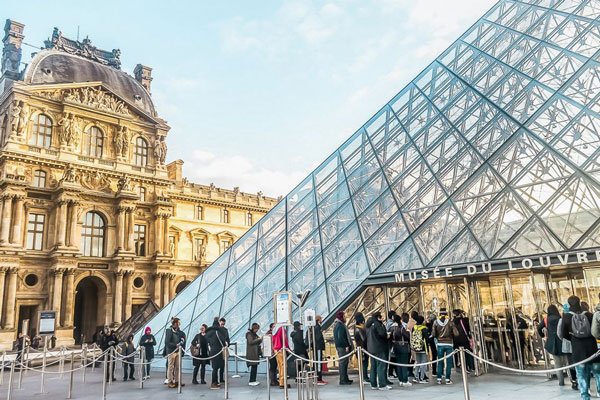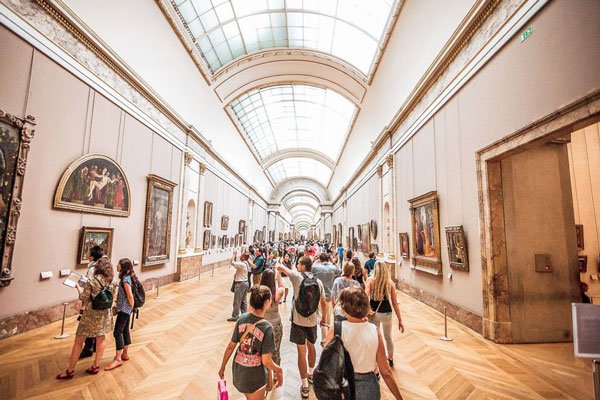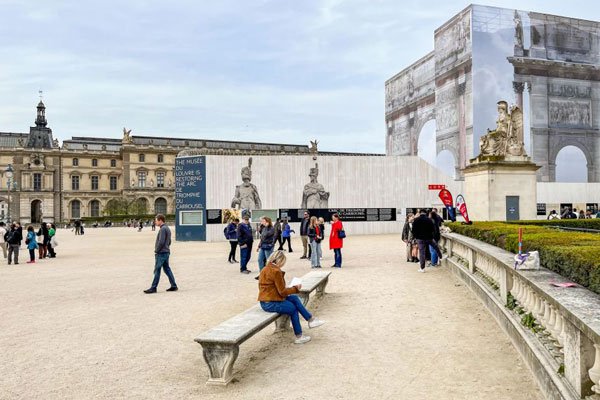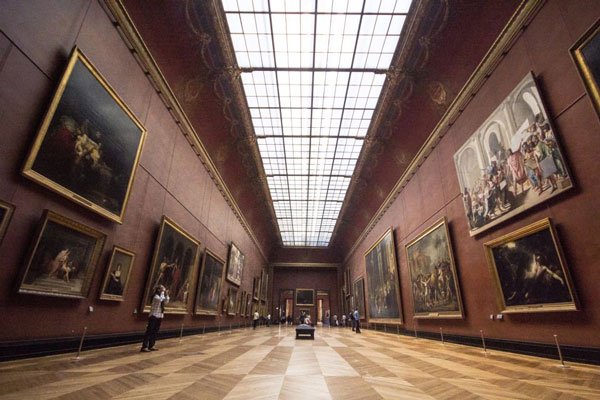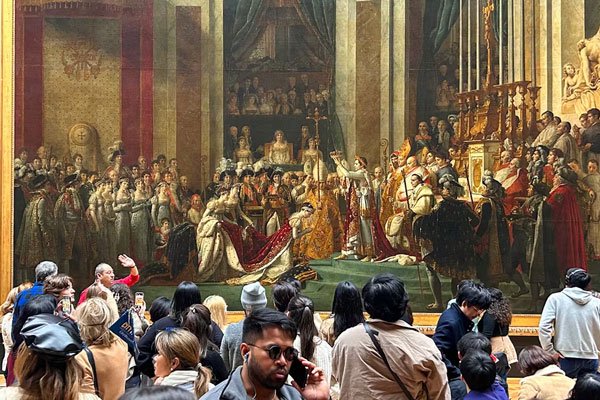Fascinating Facts about the Louvre Museum
Fascinating Facts about the Louvre Museum
Discover fascinatingfacts about the Louvre Museum in Paris. Discover remarkable stories behind the masterpieces and uncover the museum’s enduring impact on art history and its role in shaping contemporary culture.
This page delves into two distinct sections, offering both quick-glance Louvre Museum facts and captivating trivia, enriching your understanding of this world-renowned museum.
Quick Facts about the Louvre Museum
- Address: Musée du Louvre, Rue de Rivoli, 75001, Paris
- Original name: Palais du Louvre
- Total exhibition area: 780,000 square feet (72,735 square meters)
- Total amount of exhibits: Over 350,000
- Total amount of exhibits on display: Approximately 35,000
- Construction started and finished: 1546-1559
- Architects:
- Pierre Lescot: Principal architect of the Louvre’s transformation from a medieval fortress into a Renaissance palace, designing Cour Carrée, and overseeing the construction of Petite Galerie
- Jean Bullant: Continued the Renaissance transformation, designing the Tuileries Palace and the Pavillon de Florac, which connected the Louvre to the Tuileries.
- Charles Percier and Pierre Fontaine: Played a significant role in the Neo-Classical renovation of the Louvre, redesigning Cour Napoléon, adding the Arc de Triomphe du Carrousel, and creating Salle d’Apollon.
- Henri Labrouste: His contributions focused on the Grande Galerie, the long, glass-covered gallery that runs along the Seine River.
- I.M. Pei: Designed the iconic glass pyramid as the new main entrance of the museum.
- Engineers:
- Pierre Chambiges: Worked on Tuileries Palace and Grande Galerie. He was known for his innovative use of brick and stone construction.
- Jean Cousin the Younger: Was responsible for the design and construction of Grande Galerie’s interior walls and vaults.
- Architectural style:
- Gothic (conserved underground)
- French Renaissance
- Louis XIII style
- French Baroque
- Neoclassical
- Neo-Baroque and Napoleon III style
- Modernism (the pyramid)
- Transformation into museum started and finished: 1793
- Responsible for transforming: Comité des Arts
- Renowned for its: Diverse collection spanning over 8,000 years of art from around the world, including iconic masterpieces like the Mona Lisa and Venus de Milo.
- Special Events: Temporary exhibitions, concerts, lectures, and workshops
- Number of Visitors per Year: Over 9 million
17 Fun Facts about the Louvre Museum
Explore the enchanting nuances of Musée du Louvre through these intriguing and delightful nuggets of information:
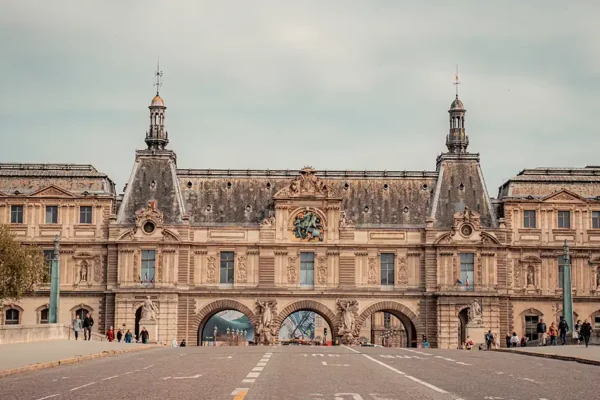
First there was a fortress
The Louvre was originally built as a fortress to protect Paris from Viking raids in the 12th century. The first fortifications at the Louvre were built in 1190 by King Philip II Augustus. The fortress was expanded and improved over the centuries.

First transformation
In the 16th century, the fortress eventually became a royal palace. King Francis I of France began a major renovation project, transforming the Louvre into a grand Renaissance palace. From then on, Louvre served as the principal residence of the French monarchy for over 700 years.
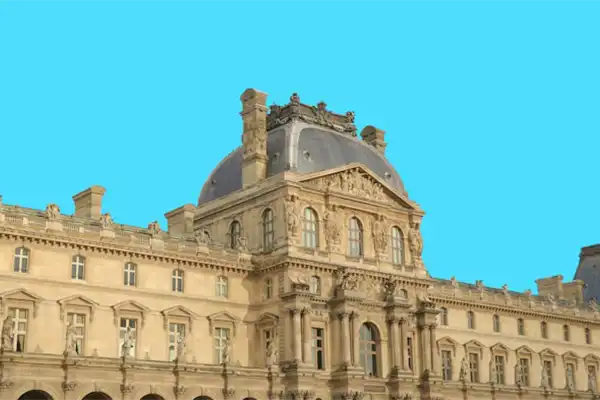
Second transformation
Following the French Revolution, Louvre was transformed into a public museum in 1793. The National Assembly, the governing body of France during the Revolution, declared the Louvre the Musée Central des Arts, or Central Museum of the Arts. This marked a significant shift in the Louvre’s purpose, from a royal residence to a repository of art for the public.

Adding 5,000 pieces
During his reign, Napoleon Bonaparte significantly expanded the Louvre’s collection by acquiring around 5,000 artworks from conquered territories across Europe. He renamed the museum the Musée Napoléon to reflect his personal triumph and to showcase his vast art collection. However, after his defeat at the Battle of Waterloo, many of the artworks acquired during his conquests were returned to their original owners or their respective national museums.
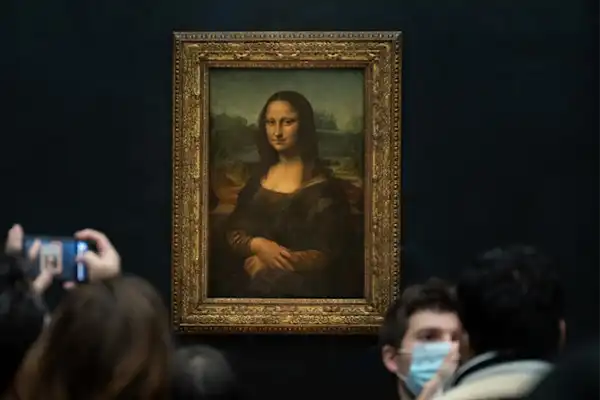
The disappearance of Mona Lisa
On August 21, 1911, the world-famous painting, Mona Lisa, was stolen from the Louvre Museum in Paris. The theft sent shockwaves through the art world and sparked a global manhunt for the stolen masterpiece. Two years later, in December 1913, the Mona Lisa was recovered in Florence, Italy, after being discovered hidden behind a false wall in the apartment of Vincenzo Peruggia, an Italian handyman who had worked at the Louvre.
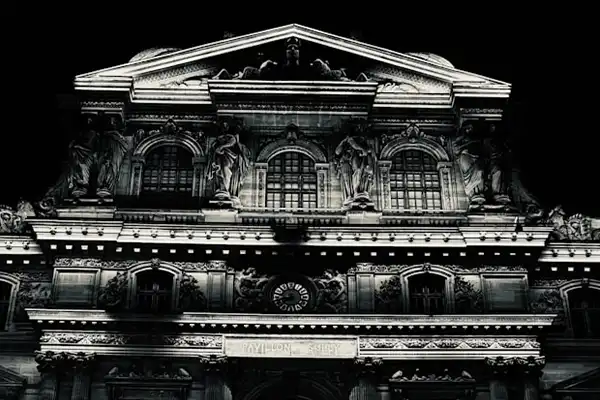
The misuse as a storeroom
During World War II, the occupying Nazi forces looted numerous artworks from across Europe, including many masterpieces from Louvre. The museum was used as a central storage depot for these stolen artworks, which were then transported to Germany for safekeeping. The Nazis intended to use these artworks as cultural trophies and to enrich their own collections.

The Monuments Men
In the aftermath of the war, the Monuments Men, a team of passionate art experts, undertook the challenging task of recovering looted artworks. Despite facing obstacles such as hidden locations and missing documentation, they successfully reclaimed numerous masterpieces, including some from the Louvre.
These artworks were meticulously documented and returned to their rightful owners. However, a few, known as the “Lost Monuments,” remain unaccounted for, with an uncertain fate, and the possibility that they may never be found.
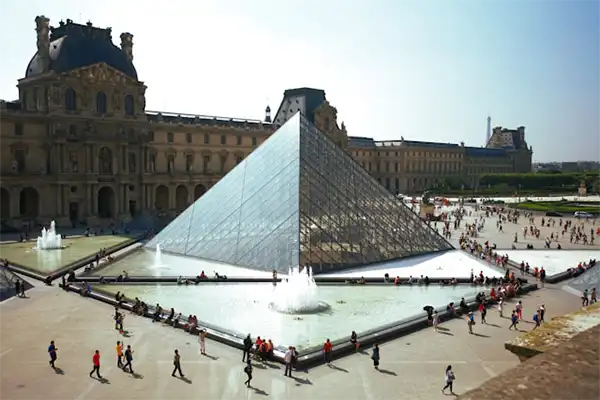
Dispute over different tastes
The glass pyramid, the now-iconic entrance to the Louvre Museum, was designed by Chinese-American architect I.M. Pei and was inaugurated in 1989. The pyramid’s design initially sparked controversy among some French critics who felt it clashed with the Louvre’s traditional architecture.
The glass and steel pyramid, with its very modern touch, initially didn’t seem to fit into the scenery at all. Nevertheless, this transparent and reflective addition, in contrast to the classic architecture of the Louvre Palace, ended up accentuating the beauty that surrounded it.
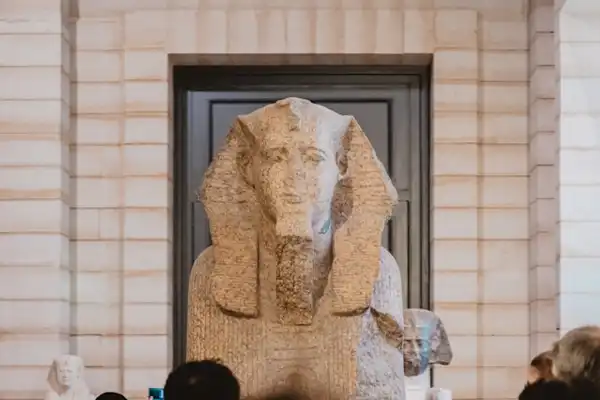
Walking to Versailles
If you were to line up all 350,000 exhibits of the Louvre Museum, the line would stretch for 14 miles (22.5 kilometers). That’s a distance even further than the Palace of Versailles outside the city limits of Paris.

3 Louvres?…
No! The is only one real Louvre! But there are two other institutions affiliated with the Louvre. Louvre-Lens, a satellite museum in Lens, France, and the Louvre Abu Dhabi, a museum on Saadiyat Island in Abu Dhabi, United Arab Emirates. These satellite museums share some of the Louvre’s collections and exhibitions.

Starting point of a visual axis
The “Axe Historique” (historical axis) is a visual axis that leads from the Louvre Museum to the Grande Arche de la Défense. The axis is 5 kilometers long and passes through some of the most iconic landmarks in Paris, such as Jardin des Tuileries, Place de la Concorde, Champs-Elysées and Arc de Triomphe de l’Étoile.
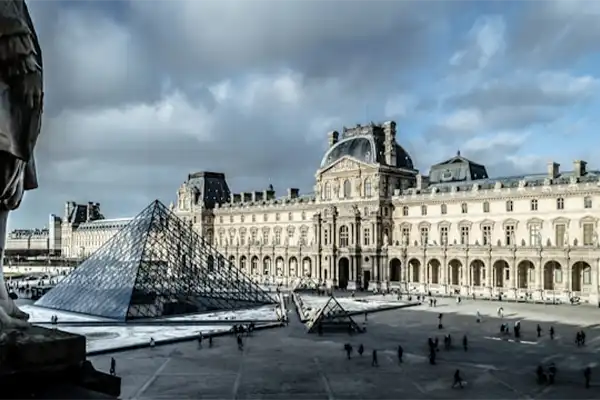
What would a palace be without a ghost?
Belphégor, or the Mystery of the Louvre is a novel by French author Gustave Flaubert, published in 1880. It is a ghost story set in the Louvre Museum, and tells the tale of a mysterious entity known as Belphégor, who is said to haunt the museum’s depths.
Belphégor is a classic example of the Gothic genre, and is filled with suspense, mystery, and a touch of the supernatural. Flaubert’s prose is elegant and atmospheric, and he creates a vivid and believable setting for his story. The novel has been adapted into several films and television series, and it continues to be a popular source of inspiration for horror writers and filmmakers.
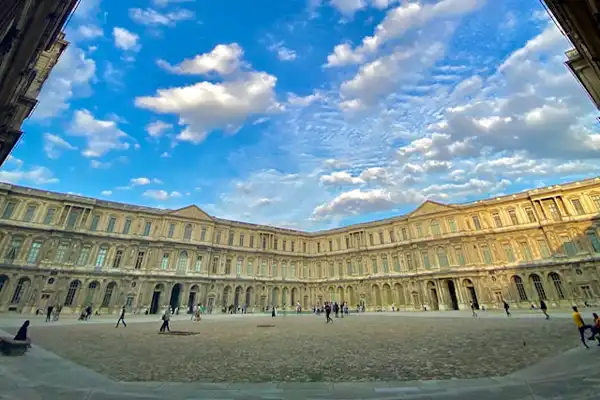
A bearer of bad news
The legend of the “Little Red Man of the Tuileries” is a fascinating and mysterious story that has been told for centuries. It is said to be the ghost of a court servant named Neuvilles, who was murdered by Catherine de Medici in the 16th century. Neuvilles was said to have been a man of short stature and always dressed in red clothes.
After his death, he is said to have returned as a vengeful spirit, haunting the Tuileries Palace and gardens. The legend is often associated with bad luck for the rulers of France. It is said that he appeared to Queen Marie Antoinette shortly before the French Revolution, and to Napoleon Bonaparte just before his defeat at the Battle of Waterloo. Some believe that the Little Red Man is a harbinger of misfortune, and that his appearances are a sign that something terrible is about to happen.

What has the devil to do with it…?
The conspiracy theory that the number 666, which is said to be the number of Satan, is somehow associated with the Louvre glass pyramid is based on a misunderstanding of the design and construction of the pyramid. The pyramid is made up of 673 glass panes, not 666. The misunderstanding seems to have originated from a misinterpretation of early blueprints for the pyramid. In these blueprints, the number 666 was used to identify a specific group of panes in the pyramid.
However, this group of panes was later revised and expanded, and the number 666 was no longer used. The conspiracy theory has been debunked by several experts, including the architect of the pyramid, I.M. Pei. Pei has stated that there is no intentional connection between the pyramid and the number 666.
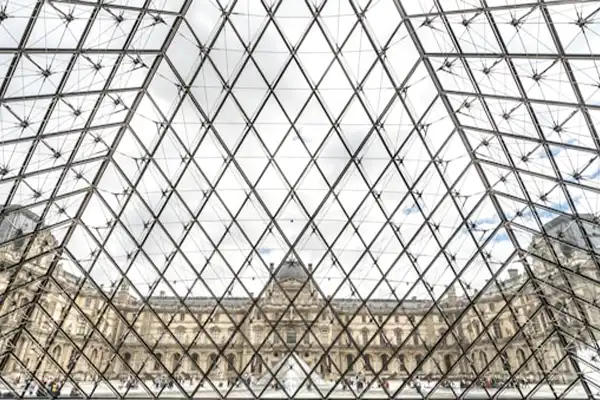
There are 5 + 7 pyramids, not only one!
There are five pyramids in the Louvre, including the main glass pyramid and three smaller pyramids surrounding it. The fifth one is an inverted pyramid, located in the gallery under the main entrance. It is not as well-known as the main pyramid, but it plays a crucial role in the film “The Da Vinci Code.” The inverted pyramid, a popular spot for tourists to take photos, is used to reflect light from the main pyramid down into the depths of the museum.
It is a symbol of the connection between the heavens and the earth, and it is said to represent the secrets that lie hidden within the museum. If you look closely, you’ll realize that on the floor of the courtyard around the large pyramid there are seven areas in the shape of pyramids of different sizes. They are part of the water features in the courtyard and a popular spot for visitors to cool off and relax.

Small, but actually really big!
How do most first-time viewers respond to the world’s most famous artwork, shrouded in mystery and the subject of countless conspiracy theories, created by the genius Leonardo da Vinci? Expecting exclamations like “Aaaah!” or “Ooooh!”? Surprisingly, the common reaction is more along the lines of, “Oh, it’s really small.” Despite not boasting perfect dimensions, the Mona Lisa, at 77 x 53 centimeters, has made a significant impact. To put it in perspective, the “largest” work of art in the world is smaller than an A2 sheet.

And finally, a little math problem…
If you only spent 30 seconds in front of each work of art, how many days would it take you to see all the works? Requirements: 35,000 works on display and an official weekly opening time of 57.45 hours. Here you go:
Total time in seconds: 35,000 works × 30 seconds/work = 1,050,000 seconds
Total time in hours: 1,050,000 seconds/3600 seconds/hour = 291.67 hours
Total weeks: 291.67 hours/57.45 hours/week ≈ 5.08 weeks
Total days: 5.08 weeks×7 days/week ≈ 35.56 days
Total months: 35.56 days/30 days/month ≈ 1.19 months
And here’s the wow-factor: At the current price of €17 for a day ticket, you would need a whopping €604.52 to see all the works of art!
Louvre Museum Tickets & Tours
Explore below your Louvre Museum ticket options and pick from the finest selection:

